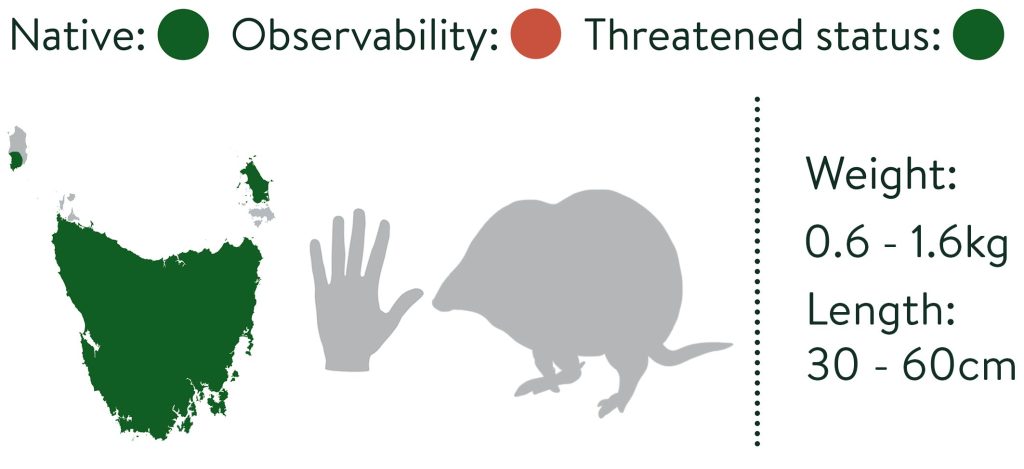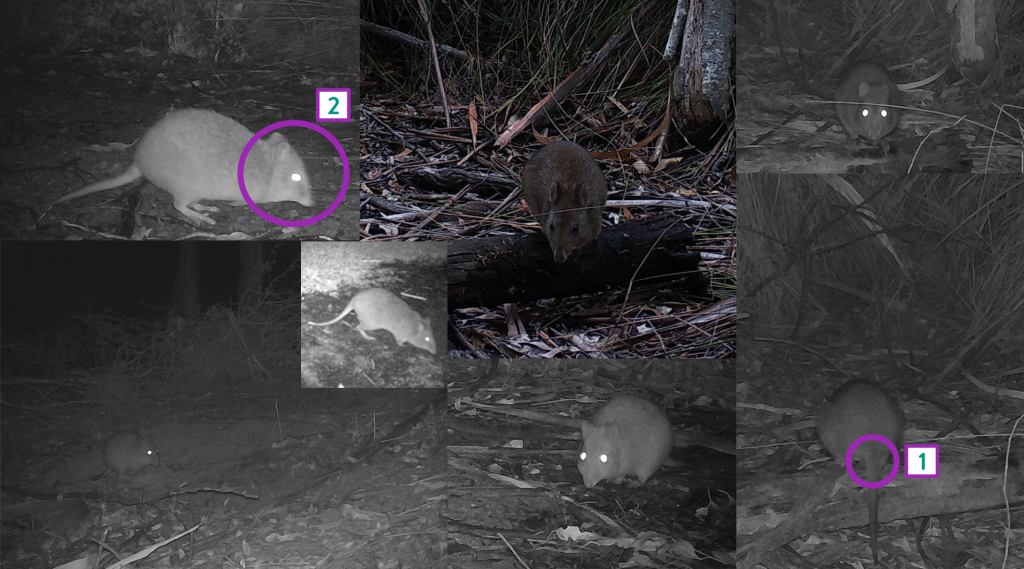Potoroidae | Potorous tridactylus
While potoroos may look a lot like a bandicoot, they are more closely related to wallabies and kangaroos. Unfortunately, on the Australian mainland, potoroos are becoming increasingly rare and their populations more fragmented. But don’t despair! In Tasmania, the species is doing relatively well.

Lifestyle
Potoroos are one of Tasmania’s best-kept secrets. These nocturnal creatures are shy and solitary, preferring to stick to dense undergrowth and being reluctant to cross open spaces. This makes potoroos particularly sensitive to habitat fragmentation. Like bettong’s, potoroos are important dispersers of fungal spores, which are themselves essential for the health of forest ecosystems. When it comes to raising their young, potoroos take their time. With a gestation period of around 38 days, potoroos have the longest pregnancy of any marsupial. They may give birth at any time of year, one young at a time. Once born, the young stay in the pouch for four months before venturing out into the world. The oldest recorded wild potoroo was at least 9 years and lived near Hobart in the Peter Murrell Conservation Area.

Key identifying features
Small body size. Coat colour is brown-grey with a pale underbelly. Tail is broad towards the base (1), shorter than body, sparsely furred and sometimes has a white tip. Long and tapered muzzle but not conical (2, but see here for a comparison of bettong, bandicoot and potoroo). Bare patch above the nose. Short and rounded ears. Mostly bounds on four feet.
Similar species
Eastern bettong – Taller body with longer legs; longer and thicker tail; more upright and bounds on two feet (more kangaroo like and less rat like).
Eastern barred and southern brown bandicoots – Shorter, less defined hind legs; longer and more symmetrical (conical) muzzle; shorter tail; eastern barred bandicoot has stripes.
Habitats
Potoroos thrive in a variety of habitats, including forests, woodlands, and heathlands. As long as there’s plenty of undergrowth to hide in, these creatures will feel right at home.
Diet:
When it comes to food, potoroos have a unique taste. While they’ll happily munch on insects, seeds, fruit, and flowers, their favorite meal by far is underground fungi (known as truffles).
Threats
Potoroos are facing several threats to their survival. Habitat clearing is a major concern, as is drought. But a big danger potoroos face, and that we can all address, is predation by feral, stray and domestic cats. Keep your kitties indoors!
